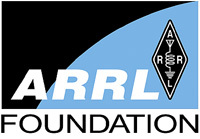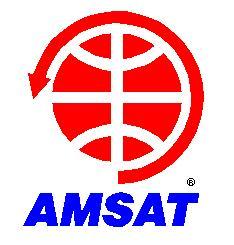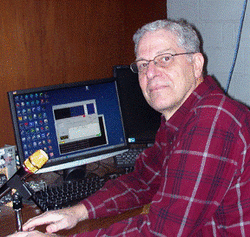 July 4, 2013 John E. Ross, KD8IDJ, Editor
| ||||||
ARRL Headquarters is closed today, July 4, for Independence Day. There will be no W1AW bulletin or code practice transmissions. Headquarters will be open for business tomorrow, Friday, July 5. We wish everyone a safe and enjoyable holiday! On the Air: Strong Geomagnetic Storm Enlivens "The Magic Band" That strong geomagnetic storm over the weekend may have trashed the HF bands, but stations along North America's Eastern Seaboard took advantage of the resulting aurora to score some DX on 6 meters. On Saturday, June 29, stations were able to work into Alaska during a period of auroral propagation. WK3N in Pennsylvania reported working his first two Alaska stations, AL7RT and KL7NO, for his #100 on 6 meters. WK3N called the episode "the most intense solar storm in the l "That may not be all that great for East Coast guys, but for us out here in the middle of the country, it was rather exciting!" he said. Spaceweather.com reported early Saturday morning that a strong geomagnetic storm was in progress as Earth passed through a region of south-pointing magnetism in the solar wind. The storm generated auroral displays as far south as Kansas. The NOAA Space Weather Prediction Center indicated the storm was a G3 level event. NOAA says that in a G3 level storm, HF radio may be intermittent. Over the weekend, the A index rose to 22, and the K index ranged from 5 to 7. Generally an A index at or below 15 or a K index at or below 3 is best for HF propagation. -- Thanks to The Daily DX, Spaceweather.com, NOAA Emergency Radio: Colorado ARES Supported Emergency Communication in Wildland Fire Response Colorado Amateur Radio Emergency Service (ARES) volunteers mustered to support emergency communications after wildland fires broke out in June. "For the second summer in a row the entire state of Colorado seems to be on fire," said North Central Colorado Region ARES Emergency Coordinator Perry Lundquist, W6AUN. "Currently there are 16 wildfires burning within Colorado." Several Colorado ARES districts activated in the wake of the Royal Gorge and Black Forest fires June 11. Members provided communication support for sheltering activities. Later the same day,
the Black Forest Fire erupted close to the Waldo Canyon area in Colorado Springs, where a similar wildfire caused widespread destruction last year. "The Black Forest Fire has now become the most destructive fire in Colorado history," Lundquist said. It ultimately consumed 14,280 acres and 507 homes and caused two deaths. During the fire's peak, eight shelters were opened for both people as well as animals large and small, Lundquist reports. More than 35,000 residents had to evacuate, he said, which placed a very heavy burden on the American Red Cross, which immediately requested ARES communication support between its eight various shelters and the Pikes Peak Red Cross headquarters. ARES volunteers responded by providing around-the-clock radio operators for several days. Lundquist said in late June that several Jefferson County ARES members were still working on other fires within the state where their ARES members are assigned individually as National Wildfire Coordinating Group (NWCG) certified communication technicians and radio operators. "Colorado Section and Regional ARES leadership has worked closely to support the local ARES districts and to provide ARES mutual aid in the form of communications equipment and ARES-trained manpower resources wherever and whenever needed," he said. -- Thanks to Perry Lundquist, W6AUN; Colorado SM Jack Ciaccia, WMØG, and Rick Palm, K1CE Emergency Radio: Hams in India Support Emergency Communications Following Flood Disaster Amateur Radio volunteers provided emergency communications in the flood-stricken state of Uttarakhand in northern India, after unusually heavy early seasonal monsoons caused flooding and mudslides in June. At least 800 people have died. Jim Linton, VK3PC, who chairs the IARU Region 3 Disaster Communications Committee, says the disaster caught everyone by surprise. "The emergency communications provided by radio amateurs are well known to disaster authorities and the government, through their preparedness drills and other presentations," Linton said. India's National Coordinator for Disaster Communication Jayu Mbide, VU2JAU, who is with the Amateur Radio Society of India (ARSI), told Linton that he had been in contact with two Amateur Radio stations active in the disaster area at Dehradum and Uttarkshi. "They have been sending messages via coordinating stations in Gwalior, New Delhi and elsewhere," he said. Linton said emergency communication support was expected to continue "for some time." Linton added. According to the BBC, the early monsoons may be the heaviest in 80 years. "Swollen rivers have swept away entire villages in Uttarakhand, where there were many travelers in what is peak tourist season," the broadcaster reported. "Nearly 100,000 people have been evacuated from the affected areas in the Himalayan mountains." Government rescue efforts have included military helicopter drops of food, water and medical supplies to those trapped by the flood. -- Jim Linton, VK3PC, with Jayu Mbide, VU2JAU; BBC Ham Radio in Space: HamTV Project to Open "A New Era" for ARISS The Amateur Radio on the International Space Station (ARISS) program hopes an Amateur Radio digital TV system will be up and running aboard the International Space Station by later this year. A project initiated by AMSAT-Italy, HamTV would provide one-way video and audio from the ISS to complement the FM radio voice link used for ARISS school group radio contacts. According to an overview paper
drafted by ARISS-Europe Chairman Gaston Bertels, ON4WF, a DATV downlink on S-Band (2.4 GHz) is under development to place aboard the ISS Columbus module in August. Columbus already sports the necessary antenna. As a debate between the merits of analog versus digital TV aboard the ISS continued, Bertels says, the digital system got a big boost from Italian astronaut Paolo Nespoli, IZØJPA, who had conducted ARISS school contacts in 2010 and 2011, when he was aboard the ISS. "At the initiative of AMSAT Italy, an Italian manufacturer, Kayser Italia, presented a project for an Amateur Radio DATV transmitter to ESA's [European Space Agency] educational services," Bertels explains in his paper. ESA accepted the proposal in 2012 and contracted with Kayser Italia to develop and manufacture a 10 W EIRP "Ham Video" DATV transmitter for S-Band. Receiving the DATV signal will be far more demanding than receiving VHF or UHF, Bertels notes in his overview paper. He said a study conducted by Piero Tognolatti, IØKPT, shows "that DATV decoding should be possible for a ground station equipped with a 1.2 meter dish, when the ISS is within a range of about 800 to 1000 km," limiting the DATV reception window to about 3 or 4 minutes during a favorable pass. According to Bertels, Kayser Italia is to provide five ground stations for siting in Europe. "It is hoped that amateurs will support other ground station 'chains' in other countries, as multiple stations are needed to provide up to 15 minutes of video in support of school contacts," Bertels explains in his paper. He says ARISS anticipates that similar chains of ground stations will be set up on other continents, to expand the system's flexibility. "A new era opens for Amateur Radio on the International Space Station," Bertels concludes. -- Thanks to AMSAT News Service; Kayser Italia Education: The ARRL Foundation Announces 2013 Scholarship Recipients The ARRL Foundation Board of Directors has announced the scholarship recipients for 2013. In 2013, the Foundation awarded "Amateur Radio organizations and individual donors have enriched the program to reward high academic achievement and community service," Hobart said. "I am constantly amazed at what young radio amateurs accomplish in their young lives, even as they work hard to perform academically at the highest levels. Congratulations to all the applicants who demonstrate the best that Amateur Radio has to offer!" In addition to the 82 winners, there are currently four holders of the William R. Goldfarb Memorial Scholarship, which assists recipients in receiving a four-year undergraduate degree in engineering, science or in the medical or business-related fields. As announced in June the 2013 recipient -- and the 10th Goldfarb Scholarship winner -- is Calvin P. Darula, KØDXC, of St Bonifacius, Minnesota.
The application period for 2014 ARRL Foundation Scholarships opens October 1, 2013, and closes February 1, 2014. Descriptions of all available scholarships and selection criteria as well as application instructions and forms are on the ARRL Foundation website. Inquiries regarding the scholarship program should be made via e-mail. People: New AMSAT Director of Field Operations Hopes to Revive Field Organization AMSAT's new Director of Field Operations Patrick Stoddard, WD9EWK, of Scottsdale, Arizona, is hoping to return AMSAT's Field Organization to a place of prominence within the satellite organization. "I look forward to reviving the Field Organization and re-establishing a line of communication with those who want to represent AMSAT at the local level," Stoddard said upon his appointment. "I will be reaching out to those that have assisted us in the past to ascertain their current level of interest in helping AMSAT as well as encouraging others to join our team." Stoddard will work closely with AMSAT President Barry Baines, WD4ASW, as he begins the process of breathing new life into the Field Operations organization. As director of field operations, he will be
responsible for managing AMSAT's corps of area coordinators, who represent AMSAT locally. Area coordinators serve as the "Ambassadors of AMSAT." This may include staffing AMSAT booths at hamfests, giving local/regional club presentations on AMSAT and satellite operations and serving as Elmers to those seeking information about operating through satellites. At one time more than 100 AMSAT members were on the list of area coordinators in the US and Canada.-- AMSAT News Service People: N4HY Co-Advises Virginia Tech DARPA Spectrum Challenge Team Former AMSAT director and vice president for engineering Bob McGwier, N4HY, is advising one of two Virginia Tech teams named as finalists in the Defense Advanced Research Projects Agency (DARPA)
Spectrum Challenge. McGwier, who chairs the ARRL software defined radio (SDR) working group, is director of research at Tech's Hume Center in Arlington, Virginia. He shares Hume Center Team advising duties with Charles Clancy, an associate professor of electrical and computer engineering and director of the Hume Center. The Hume Center and Wireless@VT teams qualified among 15 finalists out of 90 competitors in the DARPA Spectrum Challenge qualification round in an international competition to develop strategies for clear communication in the presence of interference on a radio channel. They will compete with the 13 other teams for $25,000 in top prizes in the preliminary challenge in September and $50,000 in top prizes in the final challenge next March. The DARPA Spectrum Challenge was organized in response to the problem of growing interference among wireless devices that function in an increasingly congested radio spectrum. The challenge tasks teams with generating SDR protocols that transmit data quickly and accurately despite interfering signals. Both Virginia Tech teams include Amateur Radio licensees. -- Virginia Tech People: Nobel Laureate Featured at W9DXCC Convention and Banquet Nobel laureate and WSJT developer Joe Taylor, K1JT, will be the banquet speaker at the 61st annual W9DXCC Convention and Banquet, Saturday, September 21, at the Holiday Inn, Elk Grove
Village, Illinois, sponsored by the Northern Illinois DX Association. Among the presentations, Eric Hall, K9GY, will speak on his T6MO Afghanistan operations; Carl Luetzelschwab, K9LA, will discuss Cycle 24 propagation; Jerry Rosalius, WB9Z, and Craig Thompson, K9CT, will offer a preview of the Amsterdam Island FT5ZM DXpedition, and Mike McGirr, K9AJ, will report on the H44AJ DXpedition to Sikaiana Atoll in the Solomon Islands. An ARRL forum will feature Central Division Director Dick Isely, W9GIG, Vice Director Kermit Carlson, W9XA, and ARRL DX Advisory Committee member Jim O'Connell, W9WU. For more information, contact Kermit Carlson, W9XA. The W9DXCC DX University Program will take place Friday, September 20, 9 AM to 5 PM. The program, "DXing from the Black Hole 2," is intended for new and seasoned DXers alike. For DX University information, contact Jack Hudson, W9MU. Hospitality suites will be open Friday and Saturday nights. Ham Radio on the Road: Flying With Spare Rechargeable Batteries May Require Preparation FAA regulations let you travel with dry cells in either your carry-on or checked baggage, but prohibit loose lithium batteries in checked baggage. But what about rechargeables in carry-on luggage? Stu Martin, K2QDE, reports that he ran into a small hitch when attempting to carry his spare hand-held transceiver battery in his carry-on bag. A notice within his boarding pass declared: "Lithium Batteries: Carriage of spare lithium batteries is not permitted in checked baggage. If you put a portable electronic device in checked baggage, you may still do so with the batteries installed in the device. Spare lithium batteries in carry-on luggage must have the terminals insulated and must be placed inside a protective case or plastic bag." Martin taped the battery's terminals and stowed it in a bag. The FAA rules apply to "consumer-sized lithium ion batteries," including "larger, extended-life laptop batteries." The FAA adds this caveat, however: "Even if an item is generally permitted, it may be subject to additional screening or not allowed through the checkpoint if it triggers an alarm during the screening process, appears to have been tampered with, or poses other security concerns. The final decision rests with TSA on whether to allow any items on the plane." More information is available on the FAA Web site. Phishing Scam via ARRL.net E-mail Addresses Reported Several ARRL members have reported that someone posing as "Arrl.net Online Services" is prompting members to provide personal information. These e-mails ask the user for his or her username and password. These e-mails do not come from the ARRL. The League would never ask you for this sort of information in this fashion. The best course of action is to ignore such requests and, as a general precaution, never send personal information via e-mail. Noted DXer, DXpeditioner Joseph D. Duffin, W2ORA, SK ARRL Charter Life Member, DXer and DXpeditioner Joe Duffin, W2ORA/EI8GT (ex W3SWL), of Moorestown, New Jersey, died June 16. He was 87. He was an alumnus of the 1978 Navassa Island DXpedition (NØTG/KP1 and WØRJU//KP1 ).-- The Daily DX DXCC Honor Roll Member Ivy "Keith" Luke, W5AV, SK The ARRL has learned that ARRL and DXCC Honor Roll member Ivy "Keith" Luke, of Brandon, Mississippi, died April 11. He was 85. Licensed in 1950, Luke was a life member of the Jackson Amateur Radio Club, the Magnolia DX Association and the ARRL A-1 Operators Club. He was a #1 ARRL DXCC Honor Roll member with 381 entities confirmed in the DXCC (mixed) standings. This Week in Radiosport
Upcoming ARRL Section, State and Division Conventions and Events
ARRL -- Your One-Stop Resource for Amateur Radio News and Information Join or Renew Today! ARRL membership includes QST, Amateur Radio's most popular and informative journal, delivered to your mailbox each month. Subscribe to... NCJ -- National Contest Journal. Published bi-monthly, features articles by top contesters, letters, hints, statistics, scores, NA Sprint and QSO Parties. QEX -- A Forum for Communications Experimenters. Published bi-monthly, features technical articles, construction projects, columns and other items of interest to radio amateurs and communications professionals. Free of charge to ARRL members: Subscribe to the ARES E-Letter (monthly public service and emergency communications news), the ARRL Contest Update (bi-weekly contest newsletter), Division and Section news alerts -- and much more! | ||||||
 ast five years." He pointed his beam north, turned on his amp and started calling "CQ." He worked into several regions of the US and Canada. K8OM reported a 6 meter opening into Eastern Iowa at 1645 UTC Sunday, June 30, when the geomagnetic storm had begun to wind down. He worked OH1ND, OH1XT and ES6RQ, all on CW.
ast five years." He pointed his beam north, turned on his amp and started calling "CQ." He worked into several regions of the US and Canada. K8OM reported a 6 meter opening into Eastern Iowa at 1645 UTC Sunday, June 30, when the geomagnetic storm had begun to wind down. He worked OH1ND, OH1XT and ES6RQ, all on CW.













